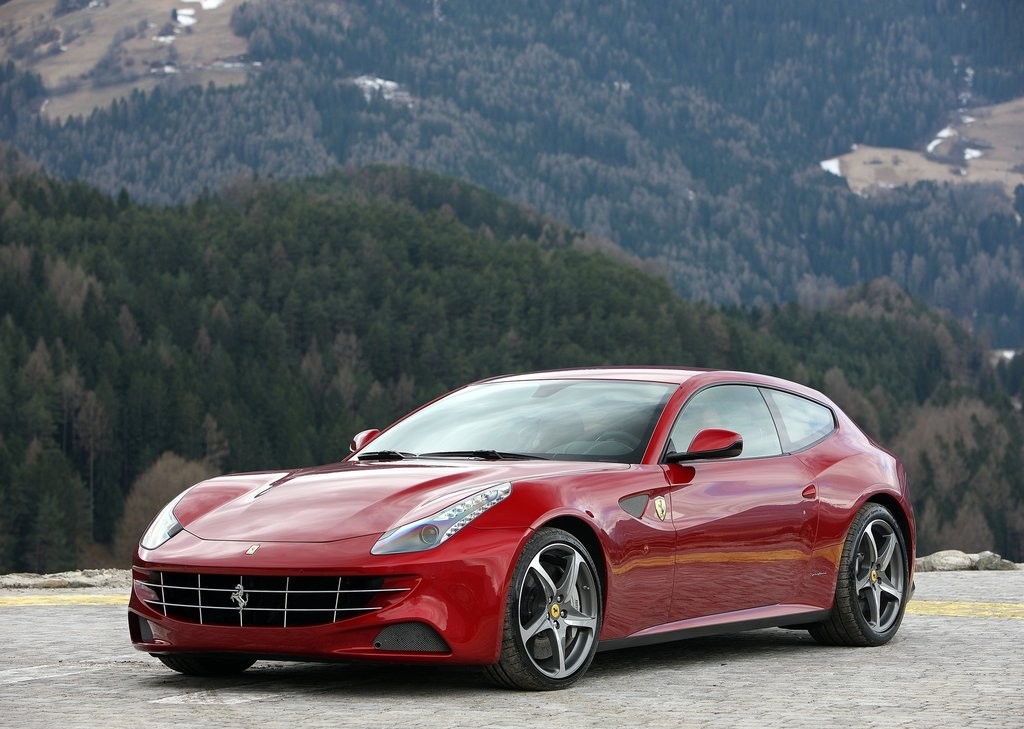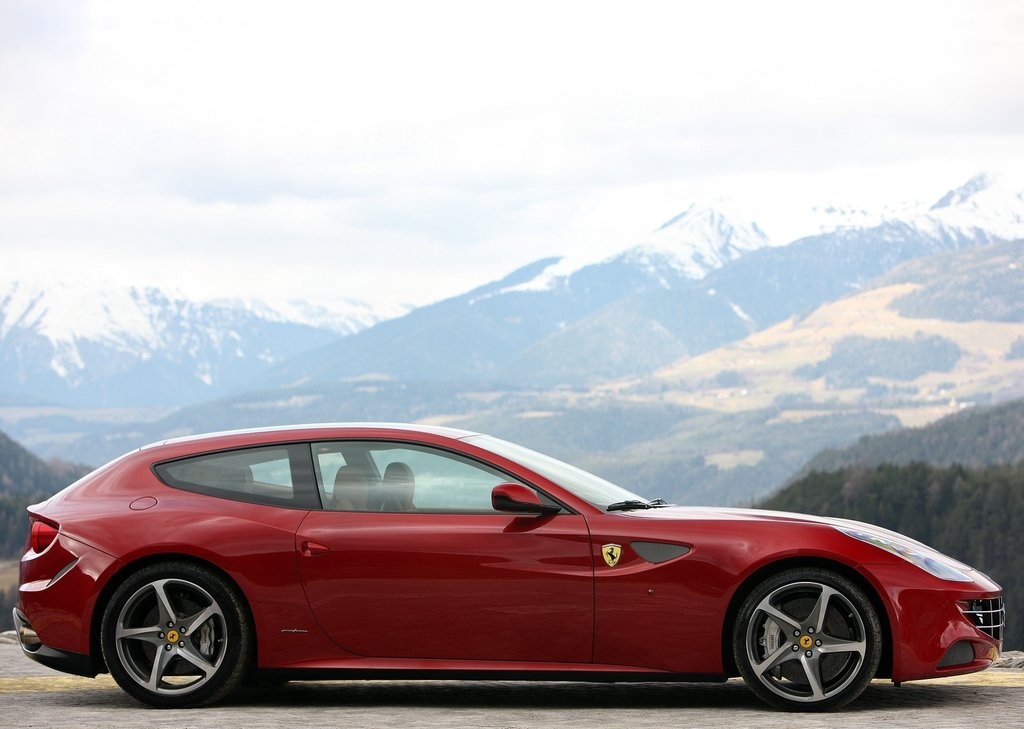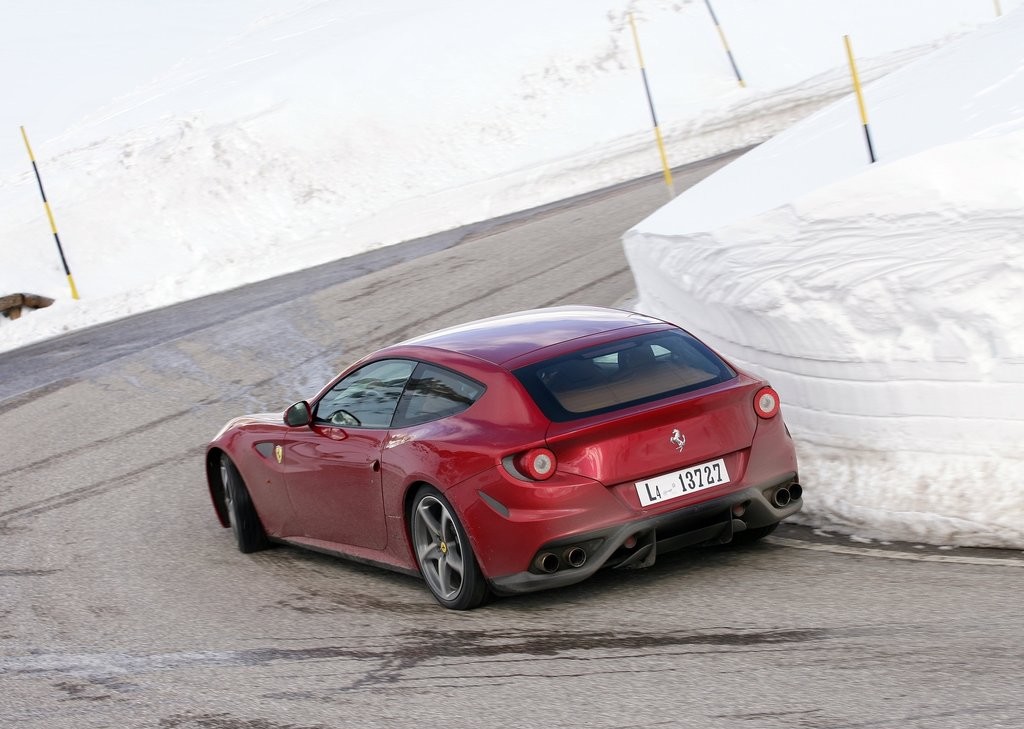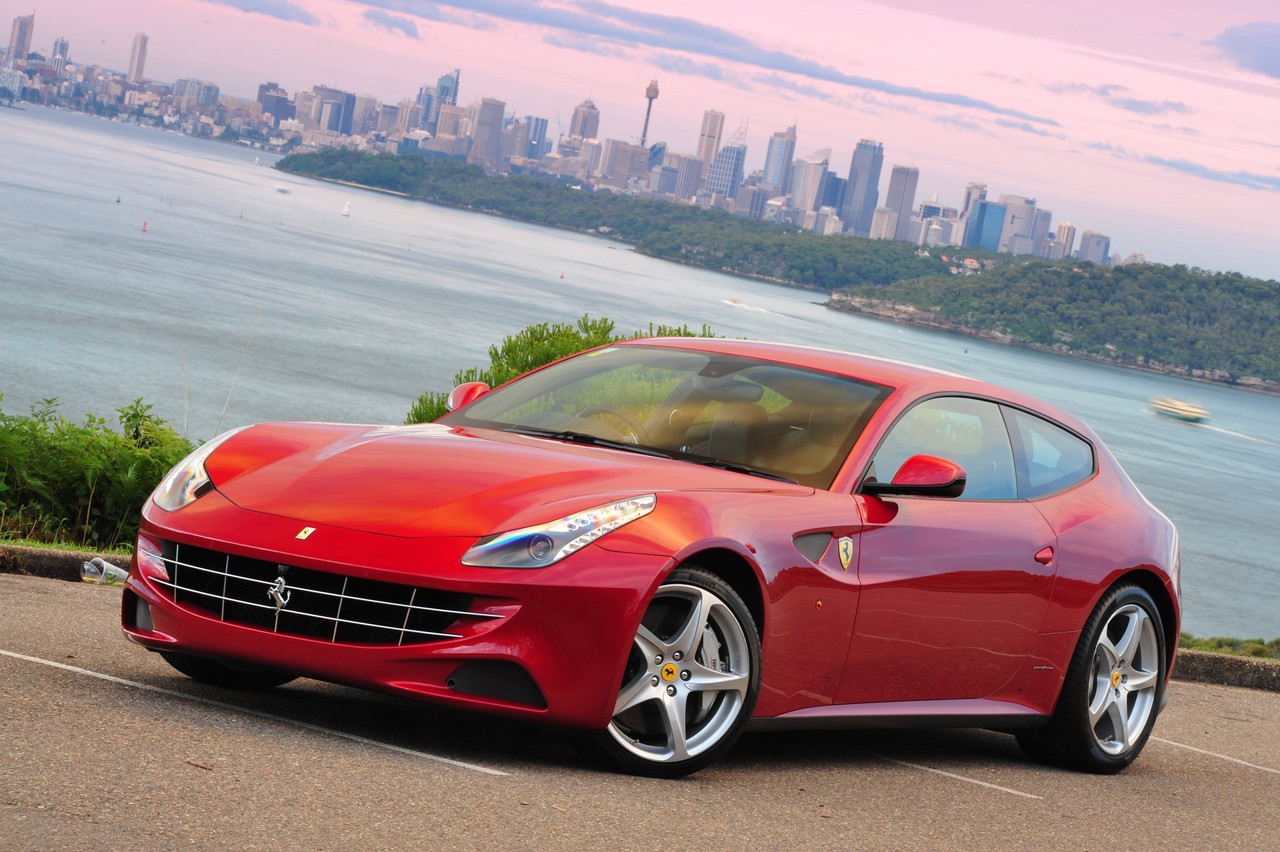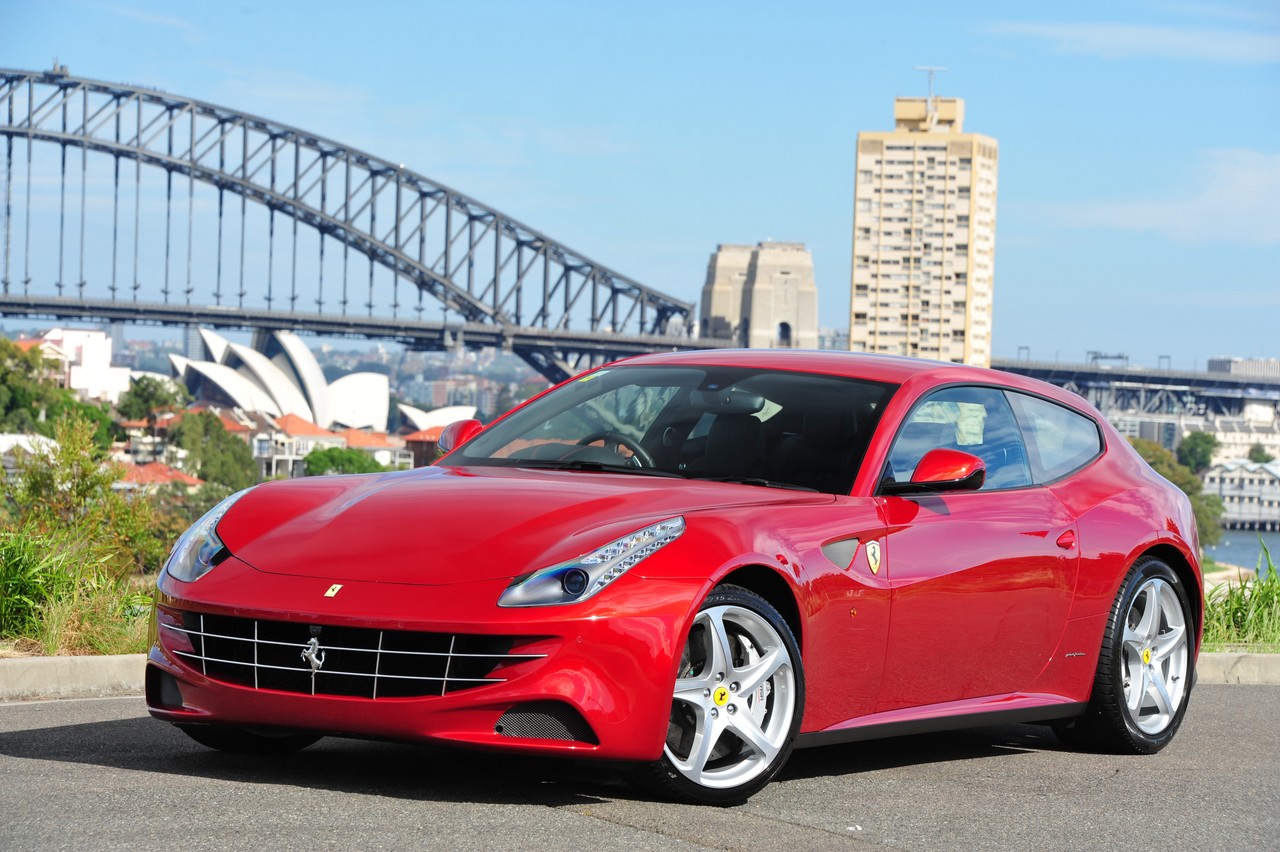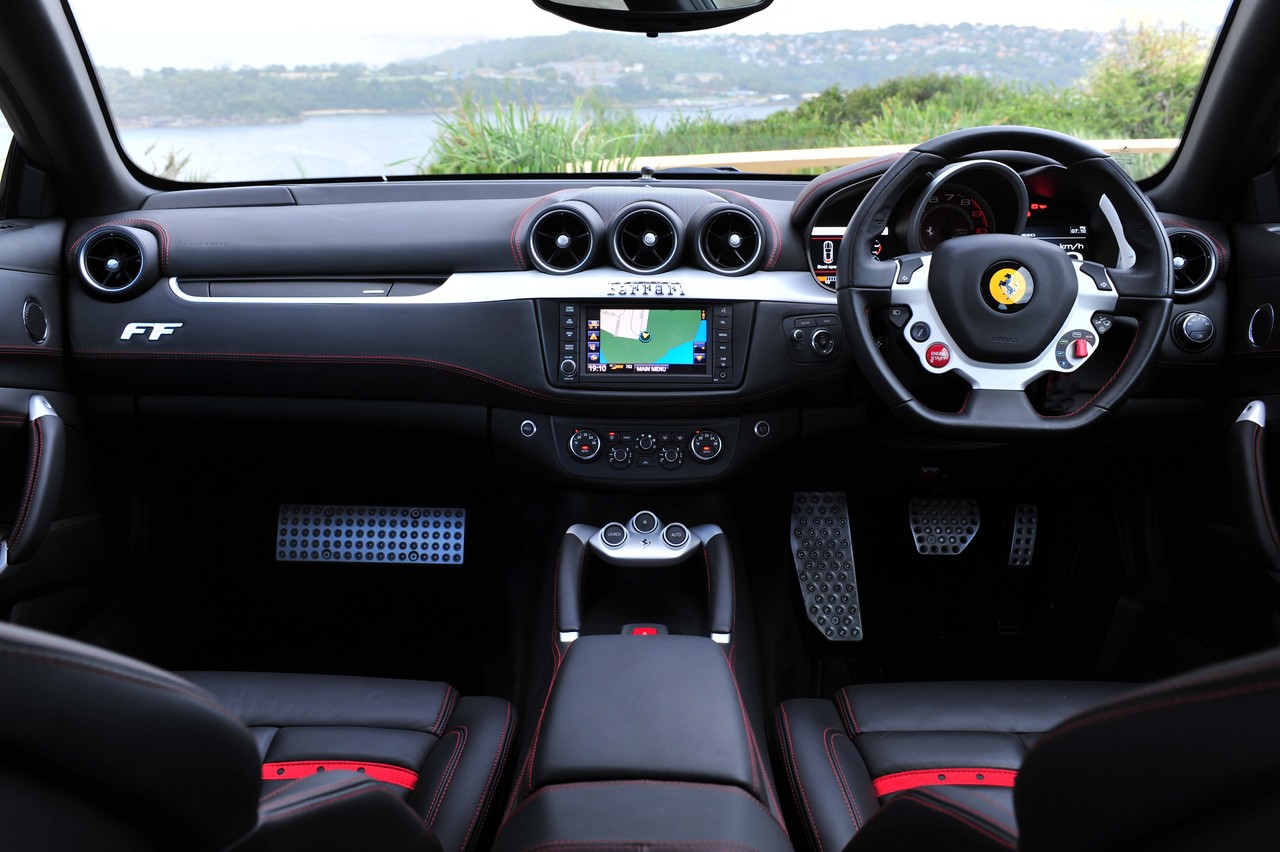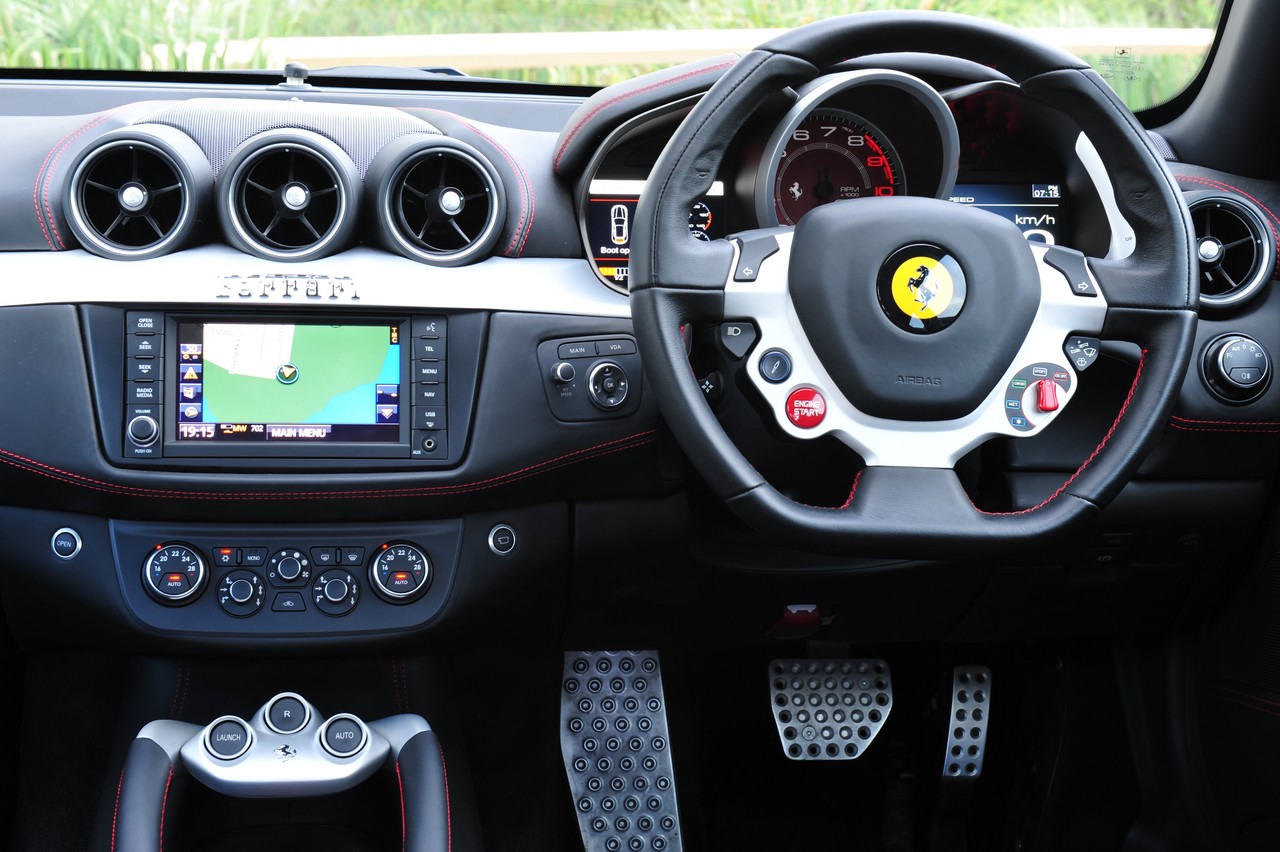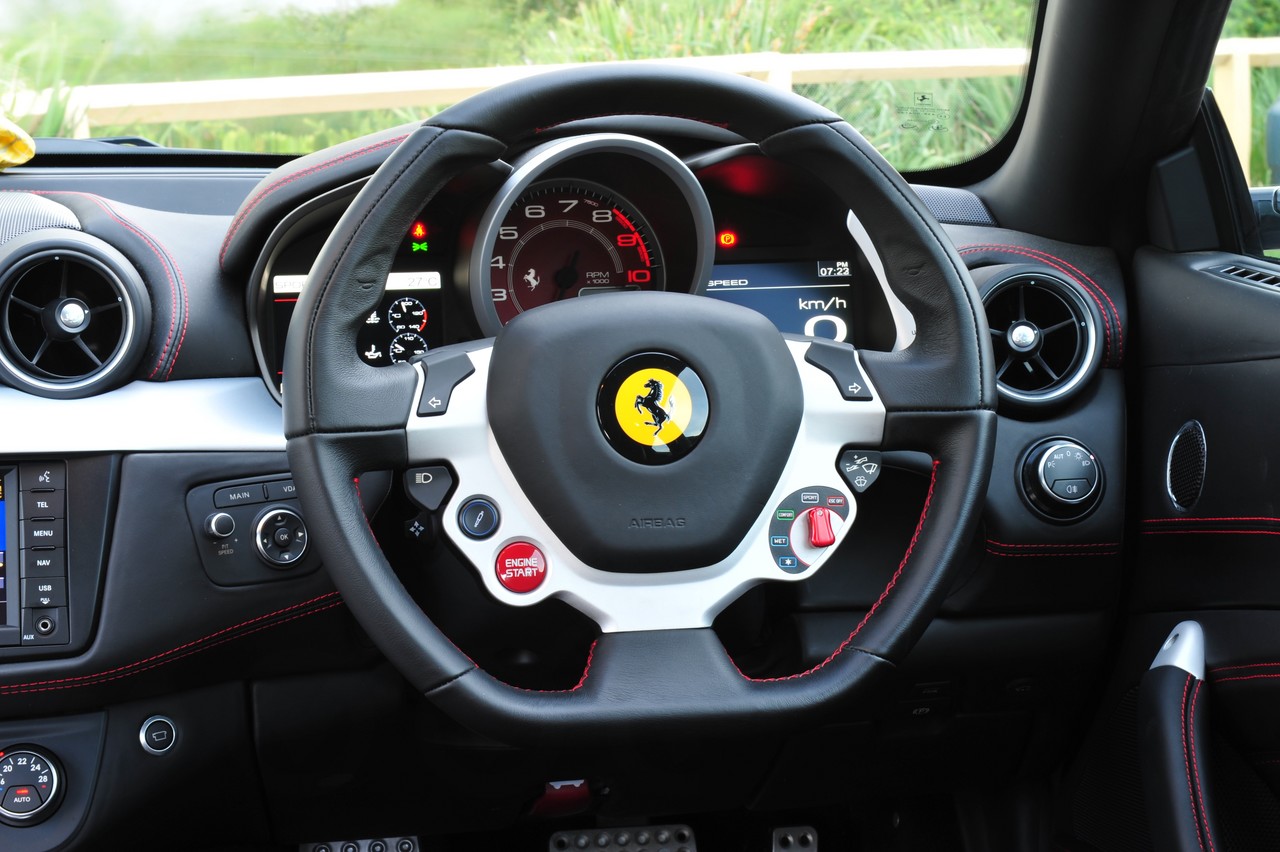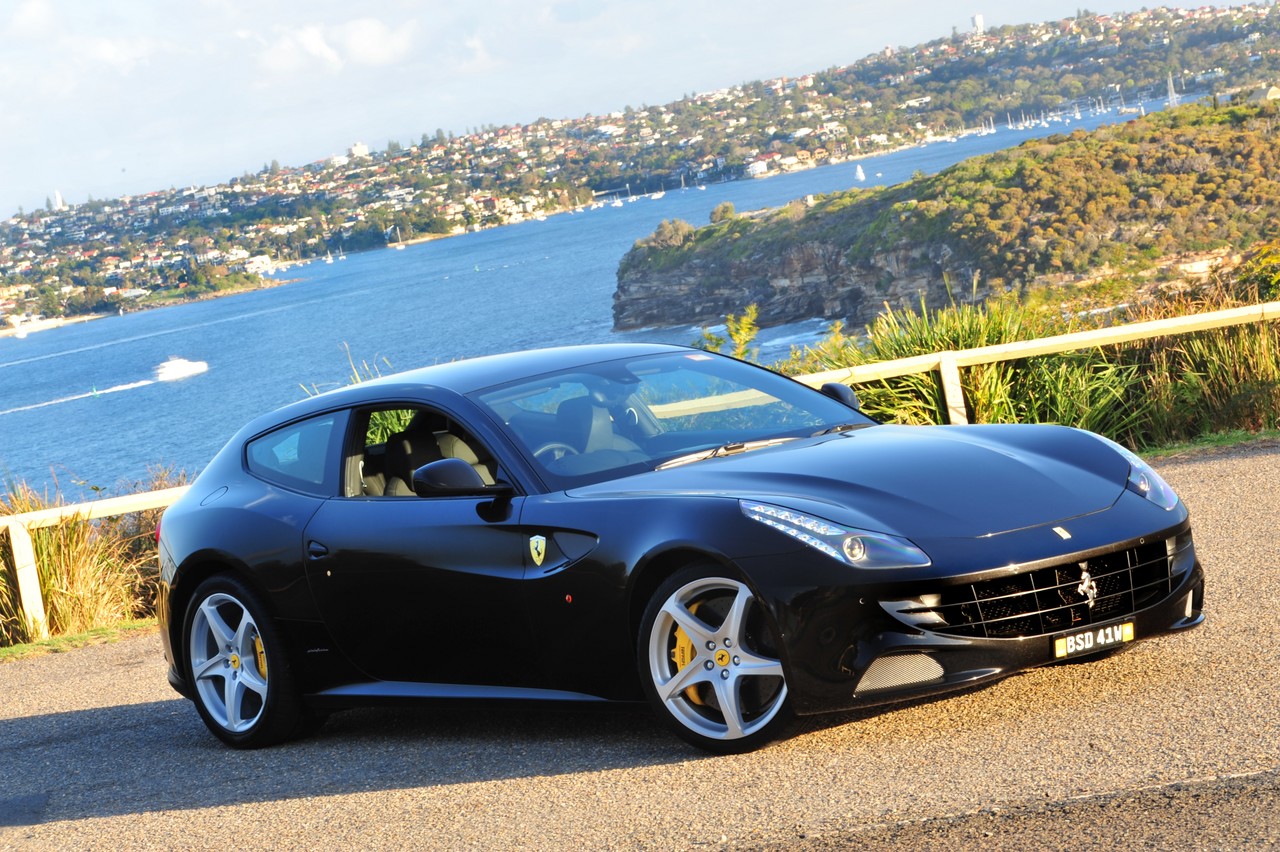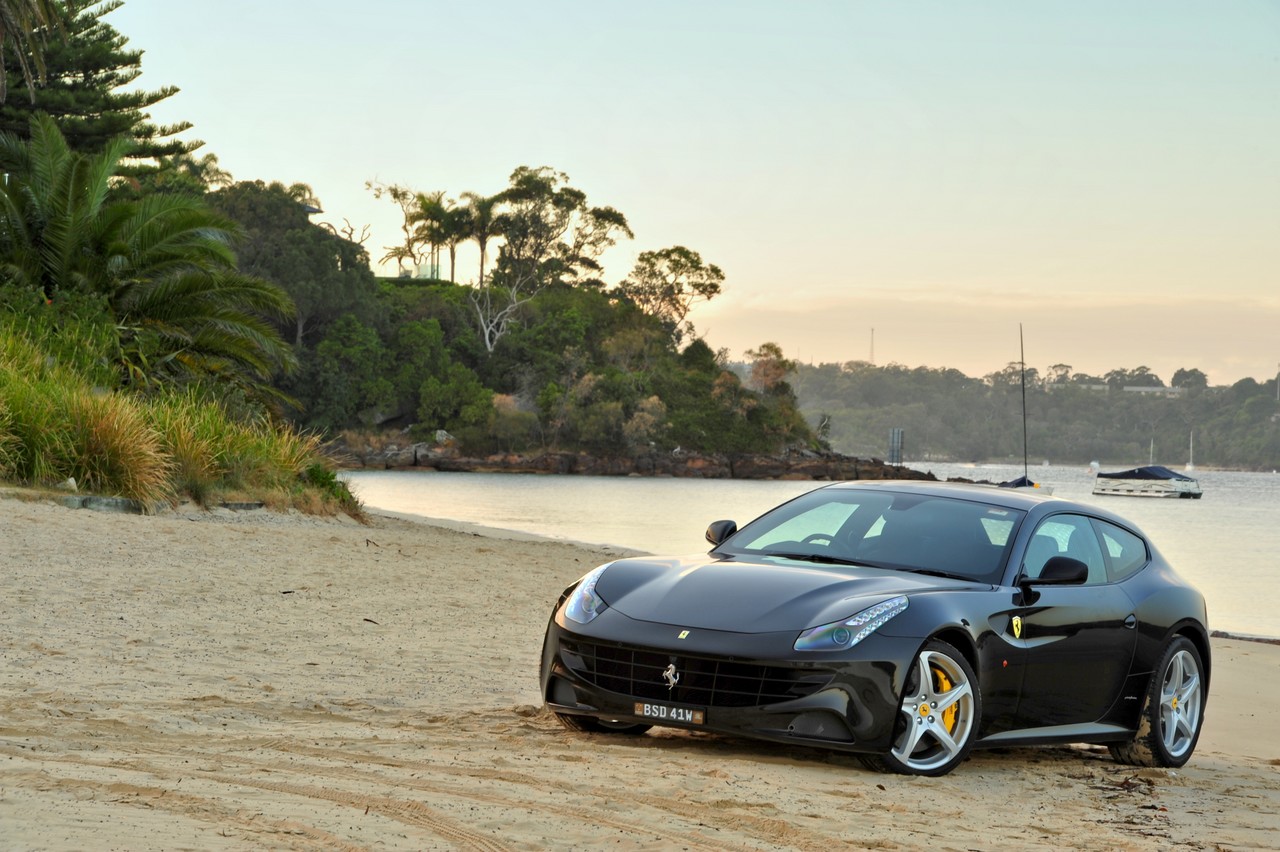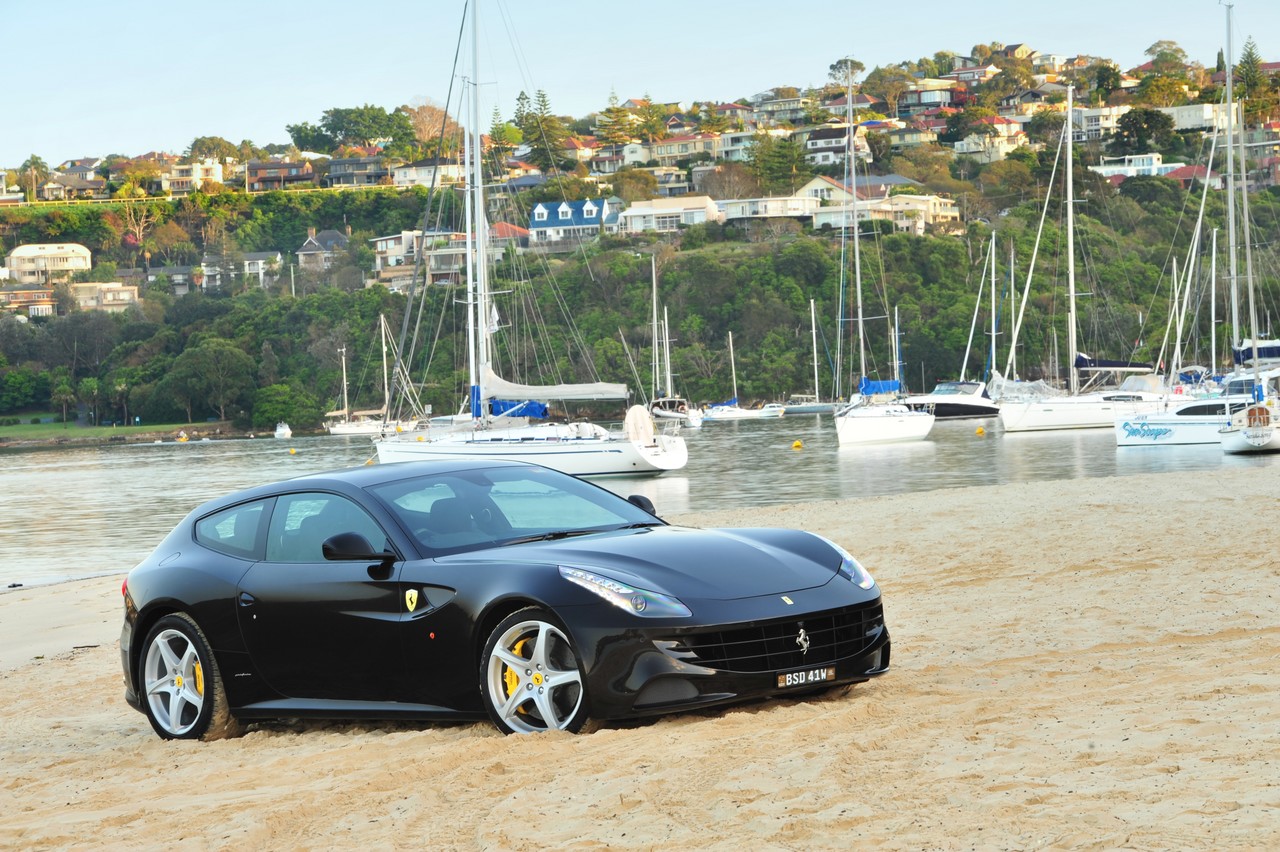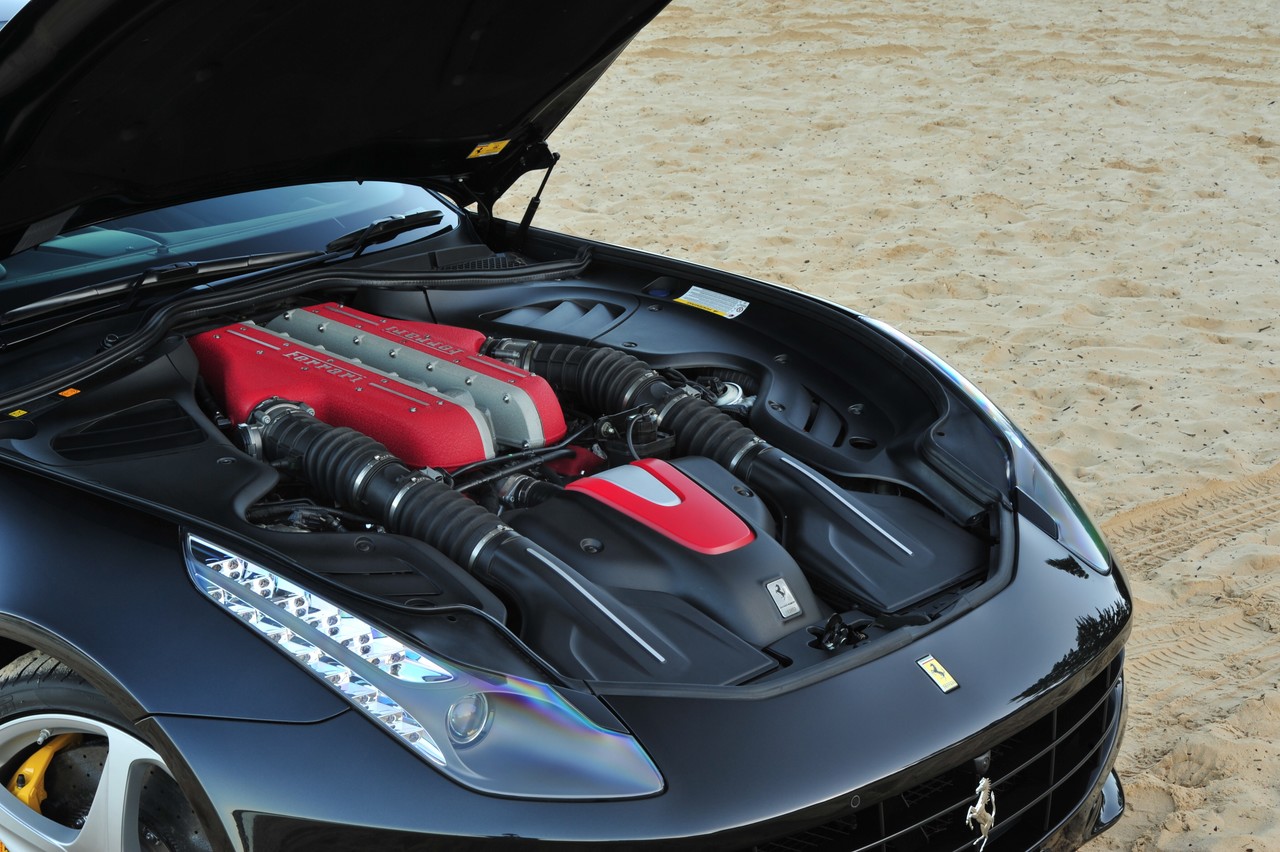
- Powerful, sonorous V12 engine
- Balanced chassis and excellent dynamics
- Surprisingly compliant ride (though still firm)
- Transmission hesistant at low speeds
- Lack of standard features
- High maintenance costs
- Tyre noise on coarse roads
Overview
Released in February 2012, the Ferrari F151 FF (short for ‘Ferrari Four’) was a two door, four-seat grand tourer with a shooting-brake body style. Manufactured in Maranello, Italy, the FF was powered by a 6.3-litre V12 petrol engine that was mated to a seven-speed double-clutch transmission which could be controlled via steering wheel gearshift paddles.
The 6.3-litre V12 petrol engine had direct injection, double overhead camshafts, four valves per cylinder and a compression ratio of 12.3:1. The engine also featured a ‘Stop & Start’ function which enabled it to shut down when the vehicle was stationary to conserve fuel. The FF could accelerate from rest to 100 km/h in 3.7 seconds and had a top speed of 335 km/h.
Compared to the 612 Scaglietti which it effectively replaced, the FF was 5 mm longer (at 4907 mm), 3 mm narrower (1953 mm) and 35 mm taller (1379 mm), though wheelbase length (2949 mm) was unchanged. The FF, however, had a 47:53 front/rear weight distribution and a drag coefficient of 0.329 Cd.
The FF had double wishbone front suspension (with lower ‘L’ arms) and independent, multi-link rear suspension. The FF was also fitted with Ferrari’s third generation magnetorheological suspension system (SCM3) which used an electronically-controlled magnetic field to change the resistance of the dampers.
| Engine | Trans. | Peak power | Peak torque | |
|---|---|---|---|---|
| FF | 6.3-litre petrol V12 | 7sp DCT | 485 kW at 8000 rpm | 683 Nm at 6000 rpm |
4RM AWD system
In normal conditions, the FF was rear-wheel drive but the ‘4RM’ all-wheel drive system could direct up to 20 per cent of the engine’s torque to the front wheels – via independent haldex-type clutches without a differential – when the ‘comfort’ or ‘snow’ drive settings were selected (via the manettino dial on the steering wheel). The system could also distribute torque to each of the four wheels individual since the E-Diff, F1-Trac and power transfer unit (PTU) were all integrated into a single CPU. However, the 4RM system was based on a secondary gearbox which had two forward gears such that the system could only operate in the first four forward gears.
Safety equipment
Standard safety equipment included dual front airbags, front side airbags, ABS, electronic brake force distribution, electronic stability control, traction control and front seatbelts with pretensioners and load limiters.
The FF was also fitted with a Brembo carbon-ceramic braking package with 398 mm by 38 mm front discs and 360 mm by 32 mm rear discs.
Features
Standard features included 20-inch alloy wheels, an eleven speaker Dolby Surround Sound system with six disc CD/DVD player, auxiliary inputs (3.5mm/USB/iPod) and Bluetooth audio streaming, dual-zone climate control air conditioning, leather upholstery, satellite navigation, power adjustable front seats, cruise control, bi-xenon headlights, automatic headlights, rain-sensing wipers, rear parking sensors, Bluetooth mobile phone connectivity with voice recognition, a leather-wrapped steering wheel, split and flat folding rear seats, remote central locking, power windows and heated mirrors, a height and reach adjustable steering wheel, trip computer and an alarm.
Related links
